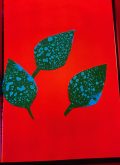For the first time, scientists have isolated genes that show major resistance to stripe rust, a disease that has devastated crops worldwide.
Researchers working together at several locations around the world have cloned rust-resistance genes: Yr7, Yr5 and YrSP.
Why it matters: It’s hoped these genes can next be used in wheat-breeding programs to help battle stripe or yellow rust. The disease’s ability to adapt to several environments and different climates have made control difficult.
“We’ve cloned the first major resistant genes against this fungal pathogen,” Peng Zhang, the study’s co-author and University of Sydney scientist, told the Chinese news agency Xinhau.
Read Also

Melancthon faces a new quarry fight over water, environment and farmland risks
A proposed Strada blast quarry in Melancthon, Ont., sparks regional debate over water protection, farmland sustainability, and Ontario’s aggregate policy.
“Everywhere they grow wheat, this has been a problem because the pathogen is very adaptive and very aggressive,” Zhang said.
Eventually, the breakthrough could offer farmers alternatives to fungicides, as resistant wheat varieties become available. Rust can kill as much as 70 per cent of crops in affected areas, if left untreated. As well, some rust pathogens have developed resistance to existing fungicides.
Staff from the University of Sydney (Australia), the John Innes Centre (United Kingdom), Limagrain (U.K.), the National Institute of Agricultural Botany (U.K.), and CSIRO (Australia) worked together on the project.
Scientists in the U.K. and Australia were separately working to identify mutant genes that could potentially help with rust resistance. They started collaborating in 2017 after learning they were working on similar projects.
The findings were published Aug. 30 in Nature Plants.














